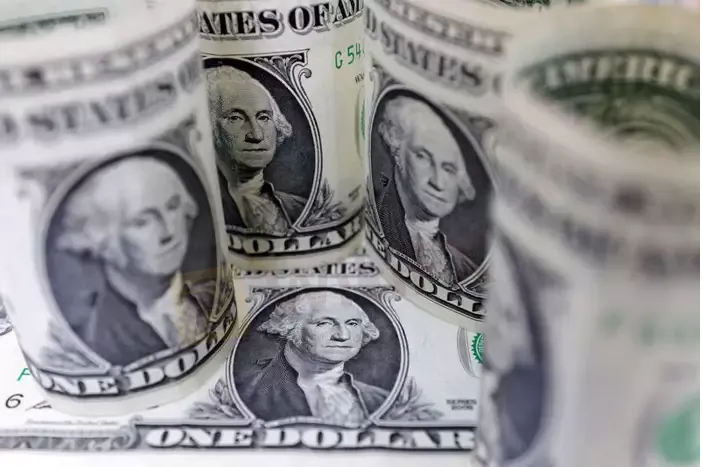简体中文
繁體中文
English
Pусский
日本語
ภาษาไทย
Tiếng Việt
Bahasa Indonesia
Español
हिन्दी
Filippiiniläinen
Français
Deutsch
Português
Türkçe
한국어
العربية
Dollar extends gains against yen as big Fed hike bets ramp up
Abstract:The dollar extended it best rally against the yen since mid-June on Monday, buoyed by higher Treasury yields after blockbuster U.S. jobs data lifted expectations for more aggressive Federal Reserve policy tightening.

The dollar extended it best rally against the yen since mid-June on Monday, buoyed by higher Treasury yields after blockbuster U.S. jobs data lifted expectations for more aggressive Federal Reserve policy tightening.
The greenback was last 0.31% higher at 135.42 yen, and earlier rose to 135.585 yen, its highest since July 28, after surging 1.57% in the previous session, its biggest single-day gain since June 17.
The dollar index, which measures the currency against six counterparts, stood at 106.77, from a Friday peak of 106.93, also the strongest since July 28.
Traders currently see a 73.5% probability the Fed continues the pace of 75 basis-point interest-rate increases for its next policy decision on Sept. 21, from about 41% before surprisingly strong payrolls data on Friday raised worries that wage growth would fuel inflationary pressures.
The focus this week will be on the U.S. consumer price index due Wednesday, and whether it can cement the odds for super-sized rate rises. Analysts polled by Reuters expect annual inflation eased to 8.7% in July from 9.1% previously.
“It will likely take a number below 8.4% to get the odds of a 50bp hike in September as the default setting,” although that “seems unlikely,” Chris Weston, head of research at Pepperstone, wrote in a note.
“I wouldnt want to be short USDs if the CPI print comes in above 9%.”
The two-year Treasury yield remained elevated at 3.2628% in Tokyo trading on Monday, after reaching 3.3310% at the end of last week, a level not seen since mid-June.
The 10-year yield stood at 2.8470%, sticking close to the two-week high of 2.8690% touched Friday.
The negative spread between the two- and 10-year yields was 42 basis points, having hit 45 basis points on Friday, the most since August 2000. An inverted yield curve is widely interpreted as a pre-cursor to a recession.
Elsewhere, the euro sank 0.35% to $1.01595 while sterling slid 0.19% to $1.2050.
The British pound dropped as low as $1.2004 on Friday, a day after the Bank of England raises interest rates by an as-expected half a point at the same time as warning of a protracted downturn.
“The Bank of Englands forecast of recession underpins the vulnerability of the pound going forward,” Rabobank senior FX strategist Jane Foley wrote in a note, predicting sterling could dip to $1.14 within three months.
Meanwhile, the Australian dollar slipped 0.06% to $0.6907, while the New Zealand dollar fell 0.19% to $0.62315.

Disclaimer:
The views in this article only represent the author's personal views, and do not constitute investment advice on this platform. This platform does not guarantee the accuracy, completeness and timeliness of the information in the article, and will not be liable for any loss caused by the use of or reliance on the information in the article.
Read more

CySEC Warns Against Unauthorized Investment Firms in Cyprus
CySEC warns investors about unregulated investment firms in Cyprus. Verify broker reliability through the WikiFX app to stay protected from scams.

STARTRADER Issues Alerts on Fake Sites and Unauthorized Apps
STARTRADER warns against counterfeit sites and apps using its brand name. Protect yourself by recognizing official channels to avoid fraudulent schemes.

Dukascopy Bank Expands Trading Account Base Currencies
Dukascopy Bank now offers AED and SAR as base currencies for trading, expanding options for clients to fund accounts in Dirham and Riyal.

PayPal Expands PYUSD Transfers to Ethereum and Solana
PayPal's PYUSD stablecoin can now transfer across Ethereum and Solana, enhancing flexibility for users through a LayerZero cross-chain integration.
WikiFX Broker
Latest News
JUST Finance and UBX Launch Multi-Currency Stablecoin Exchange
XM Revamps Website with Sleek Design and App Focus
Global Shift in Cryptocurrency Taxation: Italy and Denmark Chart New Paths
Webull Introduces 24/5 Overnight Trading to Extend U.S. Market Access
TradingView & Mexico’s Uni. Partnership, to Enhance Financial Education
Something You Need to Know About SogoTrade
eToro Launches Global-Edge Smart Portfolio: A Balanced Approach to Growth and Stability
Darwinex advises traders to update MT4 & 5
Revolut X Expands Crypto Exchange Across Europe, Targeting Pro Traders
Broker Review: Is Exnova Legit?
Currency Calculator


